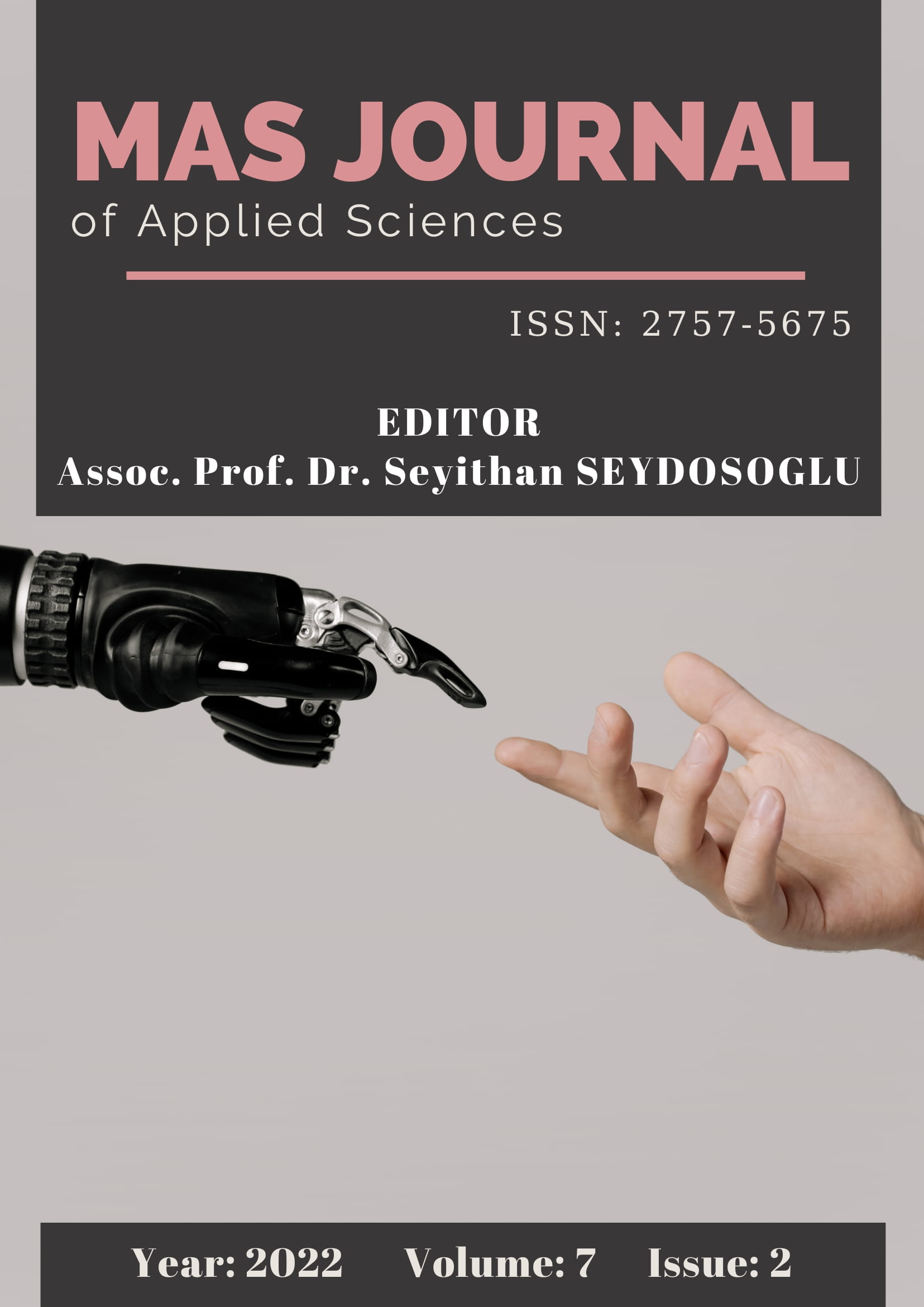Nursing Care of the Patient Receiving Mechanical Ventilator Support in the Intensive Care Unit
DOI:
https://doi.org/10.52520/masjaps.v7i2id205Keywords:
Intensive care unit, mechanical ventilator, patient, nursing careAbstract
The care for patients who are incapable of sustaining their breathing due to various conditions such as respiratory, circulatory and neurological diseases, intoxication and trauma is continued by using a mechanical ventilator in the intensive care unit. The care of the patient on a mechanical ventilator requires a multidisciplinary approach. Although all team members are responsible for the physiological and psychological care of the patient, the role and responsibility of nurses are greater. Intensive care nurses participate in the care of their patients directly, spend longer time with them, and therefore observe them more closely. They also have important responsibilities for the care of the patient, follow-up and separation from the ventilator, as well as the subsequent responsibilities. Therefore, as the individuals who know the patients best, intensive care nurses have a very important role in the medical team. Continuing the treatment and care of the patient on a mechanical ventilator without complications is only possible by providing successful and effective nursing care. Therefore, it is believed that this article will be a guide for nurses working in intensive care units, and offering care to patients on mechanical ventilators.
References
Can, G. 1998. Mekanik ventilasyon ve hemşirelik bakımı. Yoğun Bakım Hemşireleri Dergisi, 2(2):88-93.
Çelik, S. 2018. Mekanik ventilasyonda prone pozisyonunun yönetimi. Yoğun Bakım Hemşireliği Dergisi, 22(2):80-87.
Çelik S. 2006. Mekanik ventilasyonda hasta bakımı. Yoğun Bakım Hemşireliği Dergisi, 10 (1-2): 19-25.
Çelik S. 2014. Erişkin yoğun bakım hastalarında temel sorunlar ve hemşirelik bakımı. Çelik, S. (Ed.). Nobel Tıp Kitabevleri Tic. Ltd. Şti. S: 1-64. İstanbul.
Dikmen, Y. 2012. Mekanik ventilasyon klinik uygulama temelleri. Güneş Tıp Kitabevi, Ankara.
Esteban, A., Anzueto, A., Alia, I., Gordo, F., Apezteguia, C., Palizas, F., Tobin, M.J. 2000. How is mechanical ventilation employed in the intensive care unit? An international utilization review. American journal of respiratory and critical care medicine, 161(5): 1450-1458. DOI: https://doi.org/10.1164/ajrccm.161.5.9902018
Fidan, Ö., Kurban, N. 2020. Kapalı sistem aspirasyon eğitiminin hemşirelerin bilgi ve görüşlerine etkisi. Yoğun Bakım Hemşireliği Dergisi, 24(2):99-110.
Gupta, A., Gupta, A., Singh, T.K., Saxsena, A. 2016. Role of oral care to prevent VAP in mechanically ventilated Intensive Care Unit patients. Saudi journal of anaesthesia, 10(1): 95. DOI: https://doi.org/10.4103/1658-354X.169484
Hillier, B., Wilson, C., Chamberlain, D., King, L. 2013. Preventing ventilator-associated pneumonia through oral care, product selection, and application method: a literature review. AACN Advanced Critical Care, 24(1): 38-58. DOI: https://doi.org/10.4037/NCI.0b013e31827df8ad
Hussain, S.N., Mofarrahi, M., Sigala, I., Kim, H.C., Vassilakopoulos, T., Maltais, F., Goldberg, P. 2010. Mechanical ventilation–induced diaphragm disuse in humans triggers autophagy. American journal of respiratory and critical care medicine, 182(11): 1377-1386. DOI: https://doi.org/10.1164/rccm.201002-0234OC
Korhan, A.E., Yönt, H.G., Demiray, A., Akça, A., Eker, A. 2015. Yoğun bakım ünitesinde hemşirelik tanılarının belirlenmesi ve NANDA tanılarına göre değerlendirilmesi. Düzce Üniversitesi Sağlık Bilimleri Enstitüsü Dergisi, 5(1):16-21.
Kuyurtar, F. 2010. Solunum Sistemi Uygulamaları. Ay FA. (Ed.). Sağlık Uygulamarında Temel Kavramlar ve Beceriler. Nobel Tıp Kitabevleri. S: 550, İstanbul.
Macintyre, N.R. 2011. Patient-Ventilator Interactions: Optimizing Conventional Ventilation Modes. Respir Care 56(1): 73–81. DOI: https://doi.org/10.4187/respcare.00953
Mwakanyanga, E.T., Masika, G.M., Tarimo, E.A.M. 2018 Intensive care nurses’ knowledge and practice on endotracheal suctioning of the intubated patient: A quantitative cross-sectional observational study. PLoS ONE 13(8): e0201743. DOI: https://doi.org/10.1371/journal.pone.0201743
Onarıcı, M., Karadağ, M. 2015. Mekanik ventilasyondaki hastalarda ventilatör ilişkili pnömoniyi önlemede pozisyonun önemi. Hacettepe Üniversitesi Hemşirelik Fakültesi Dergisi, 2(2): 70-74.
Pazos, C.P., Soares, F.M.M., Barroso, L.C. 2020. Good Nursıng Practıces For Patıents Unsıng Mechanıcal Ventılatıon* Boas Prátıcas De Enfermagem A Pacıentes Em Uso De Ventılação Mecânıca. J Nurs UFPE on line, 14: e242958. DOI: https://doi.org/10.5205/1981-8963.2020.242958
Raoof, S. 1998a. Basics of initialventilator set-up. In: MechanicalVentilation Manuel. Eds. Raoof S, Khan FA. 1st ed. Philadelphia: VersaPress, s.15-20.
Raoof S. (1998b). Modes of ventilation. In: MechanicalVentilation Manuel. Eds. Raoof S, Khan FA. 1st ed. Philadelphia: VersaPress; s.21-33.
Rustam, J., Kongsuwan, W., Kitrungrote, L. Comfort in Patients Receiving Mechanical Ventilation: A LiteratureReview. CritCareNurs J. May; 11(2): e64159.
Santos, C.D., Nascimento, E.R.P.D., Hermida, P.M.V., Silva, T.G.D., Galetto, S.G.D.S., Silva, N.J.C.D., Salum, N.C. 2020. Good nursing practices towards patients on invasive mechanical ventilation in hospital emergency. Escola Anna Nery, 24. DOI: https://doi.org/10.1590/2177-9465-ean-2019-0300
Tagrikulu, H., Memis, D., Inal, M.T., Turan, N. 2016. Yogun bakim hastalarinda ventilatör iliskili pnömoni insidansinin arastirilmasi / investigation of ventilator associated pneumoniae in intensive care patients. Türk Yogun Bakim Dergisi, 14(1): 28-38. DOI: https://doi.org/10.4274/tybdd.30602
Terzi, B., Kaya, N. 2011. Yoğun bakım hastasında hemşirelik bakımı. Yoğun Bakım Dergisi, 1: 21-25. DOI: https://doi.org/10.5152/dcbybd.2011.05
Tidwell, S.L., Ryan, W.J., Osguthorpe, S. G., Paull, D.L., Smith, T.L. 1990. Effects of position changes on mixed venous oxygen saturation in patients after coronary revascularization. Heart & Lung: the Journal of Critical Care, 19(5 Pt 2): 574-578.
Tobin, M.J., Laghi, F., Jubran, A. 2010. Narrative review: ventilator-induced respiratory muscle weakness. Annals of internal medicine, 153(4): 240-245. DOI: https://doi.org/10.7326/0003-4819-153-4-201008170-00006
Tuğrul, S., Tunalı, B. 2002. Yapay solunum uygulanan hastanın bakımı. Yoğun Bakım Derneği Dergisi, 1(2): 37-41.
Uçgun, İ. 2008. Mekanik ventilasyon komplikasyonları. Yoğun Bakım Dergisi, 8(1): 44-59.
Uğraş, G.A., Çam, T. 2018. Yoğun bakım ünitelerinde endotrakeal tüp tespitinde kullanılan yöntemler. Mersin Üniversitesi Sağlık Bilimleri Dergisi, 11(2):226-234. DOI: https://doi.org/10.26559/mersinsbd.341866
Weiss, B., Kaplan, L.J. 2017. Oxygen therapeutics and mechanical ventilation advances. Critical Care Clinics, 33(2): 293-310. DOI: https://doi.org/10.1016/j.ccc.2016.12.002
Yılmaz, Ak-H., Yıldız, M. 2018. Mekanik Ventilasyona Pratik Yaklaşım. Koşuyolu Heart J, 21(1): 65-69. DOI: https://doi.org/10.5578/khj.53920
Downloads
Published
How to Cite
Issue
Section
License
Copyright (c) 2022 The copyright of the published article belongs to its author.

This work is licensed under a Creative Commons Attribution-NonCommercial 4.0 International License.


